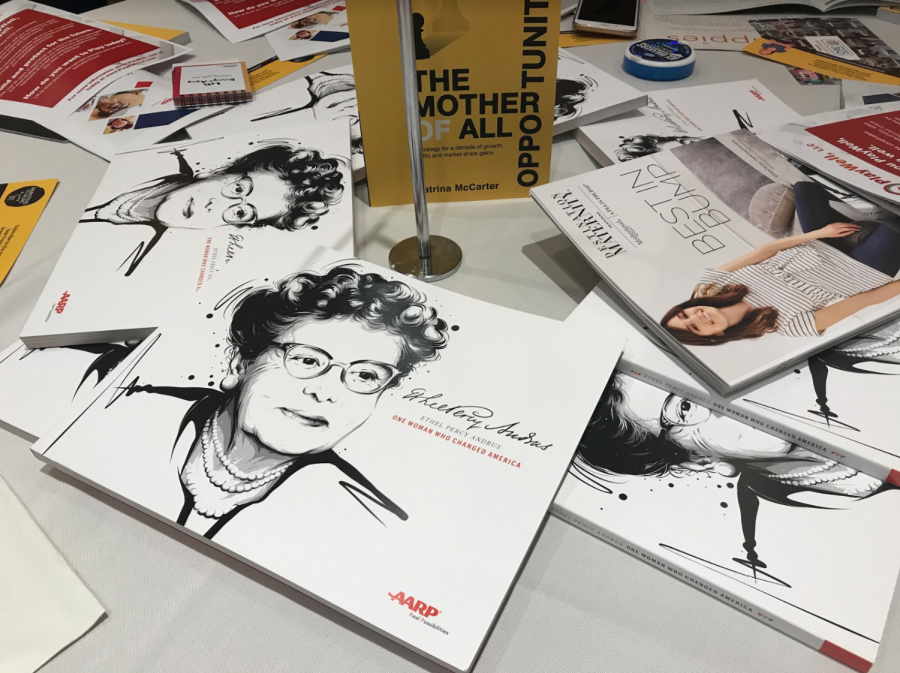Marketing to More than Moms
KATRINA LAMBERT\THE OBSERVER
The M2Moms Conference hopes to better identify and appeal to the financial needs and spending habits of mothers.
October 30, 2019
With the hope to reshape the way advertisers look at women for products, Fordham’s Center for Positive Marketing organized the 15th annual Marketing to Moms (M2Moms) conference, which took place on Oct. 16 and 17 at Fordham Lincoln Center’s Pope Auditorium.
The M2Moms conference included how-to sessions and case studies to educate businesses about marketing to the modern mother. The most recent M2Moms event emphasized the importance of upholding mothers’ individual identities when branding. “It’s about looking at the mom as the whole person and not just as a mom,” said a Healthline Parenthood associate.
The event was a part of Fordham’s Center for Positive Marketing’s mission to promote marketing strategies that benefit people’s lives in addition to business performance. The Center for Positive Marketing is an organization made up of Fordham faculty that connects industry partners, academic researchers, and students through hosting annual conferences that reflect this goal. They were approached by M2Moms “because of our focus on value creation and our identity as a part of Fordham University,” said Marcia Flicker, the communication strategist for the Center and a marketing professor at Fordham.
“The needs of modern mothers, who take on the world, run businesses and philanthropies- all while raising families and caring for themselves- is a cause very close to our mission,” said Flicker.
Dria Barnes, general manager of Healthline Parenthood, explained at the conference how businesses marketing to mothers tend to overlook the needs of the parent, and instead focus just on the baby. “When it comes to well-being, moms are being underserved,” said Barnes.
According to Barnes, sleep, mental health and nutrition were the top three most important areas of improvement to mothers — all of which have nothing to do with the baby. To tend to the true needs of moms, Barnes suggested businesses should view mothers as people first and not just mothers.
Alison Bryant, AARP’s senior vice president in research, mentioned mothers over the age of 50 in her how-to session. She believes that businesses often fall short of appealing to this “invaluable, but too often invisible female consumer.”According to Bryant, moms over 50 are a growing consumer market demographic. She also added that moms control over 85% of household purchases, which makes the 50 plus audience crucial for marketers to understand.
Bryant pushes for advertisers to disrupt age stereotypes in the marketplace by altering the images on products to feature more age diversity. A mix of ages on packaging will help market to moms Bryant said, because “women will buy age diversity.” According to Bryant, 86% of women reported feeling better about and more trusting of brands that feature a mix of ages in their advertisements.
Kathlene Fitzgerald, a photojournalist who spoke at the conference, emphasized the nuances of women in order to show advertisers how women shouldn’t be put into a box. “Like a fingerprint, every woman is uniquely different,” said Fitzgerald. In her book “Solo,” Fitzgerald highlights women who are divorced, widowed or never married and examines the unique choices they make in response to their lives’ challenges.
The participants of the 15th M2Moms conference said they gained new strategies for branding to be more in tune with mothers as individuals. Allyson Garner, an associate of Thousand Days points out that it is better to focus on all the “rich details” and personal stories of moms when marketing toward them because it is important to “understand the mom or the person as the whole person,” instead of just as a statistic.













